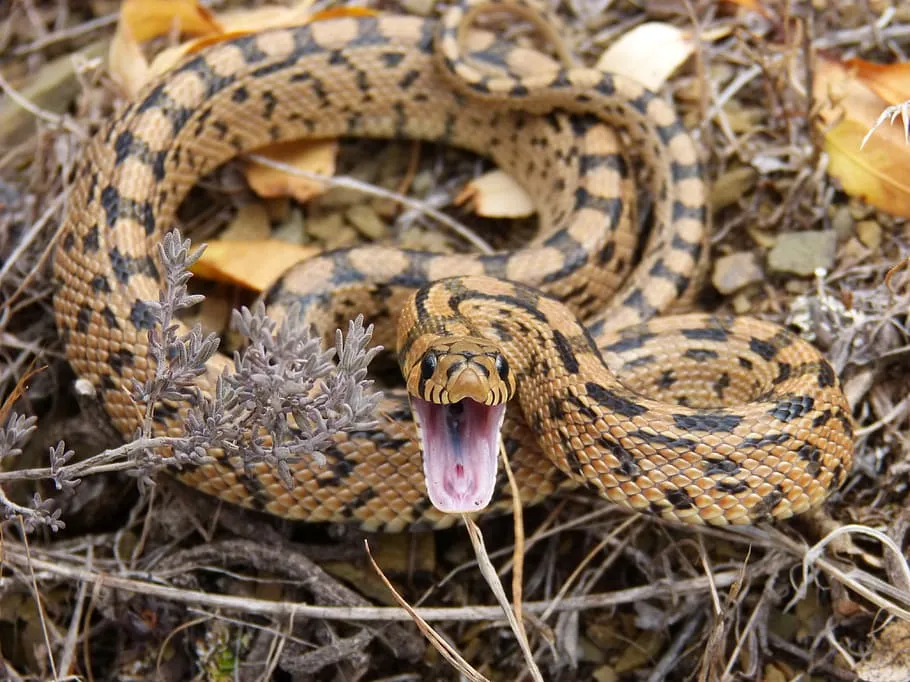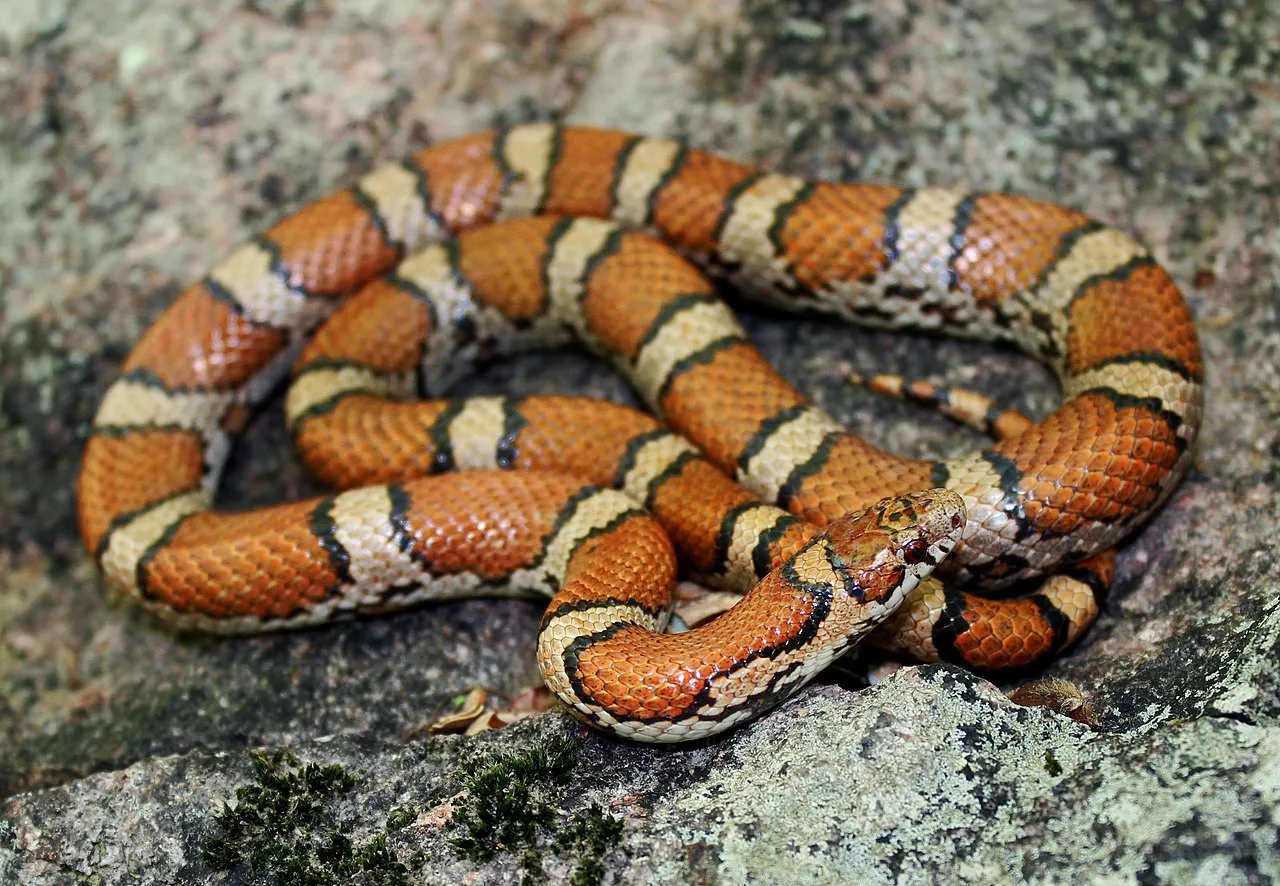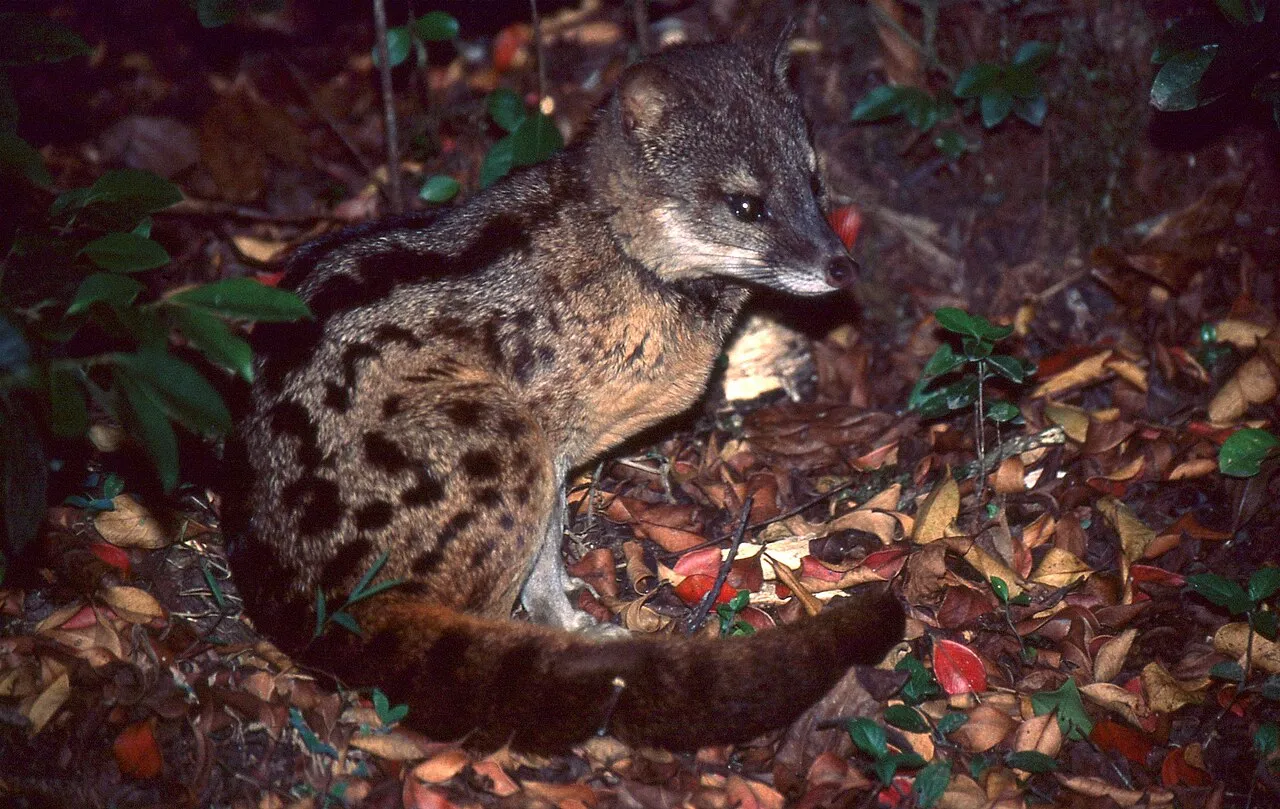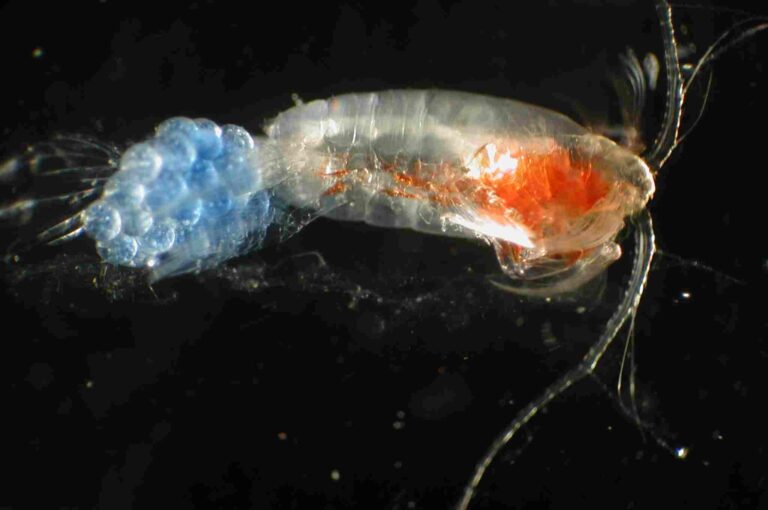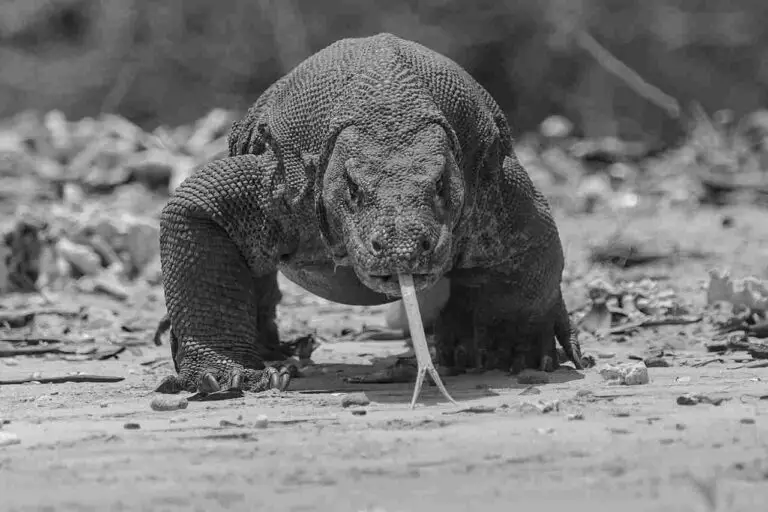Eastern Diamondback Rattlesnake Facts, Characteristics
The eastern diamondback rattlesnake, as North America’s largest venomous snake, plays a crucial role in regulating prey populations and ecosystem balance. Its unique adaptations, nocturnal behavior, and warning signals contribute to its survival and ecological significance. However, habitat loss, persecution, and vulnerability to human activities pose significant threats, underscoring the importance of conservation efforts to ensure its continued existence and the health of its ecosystems.
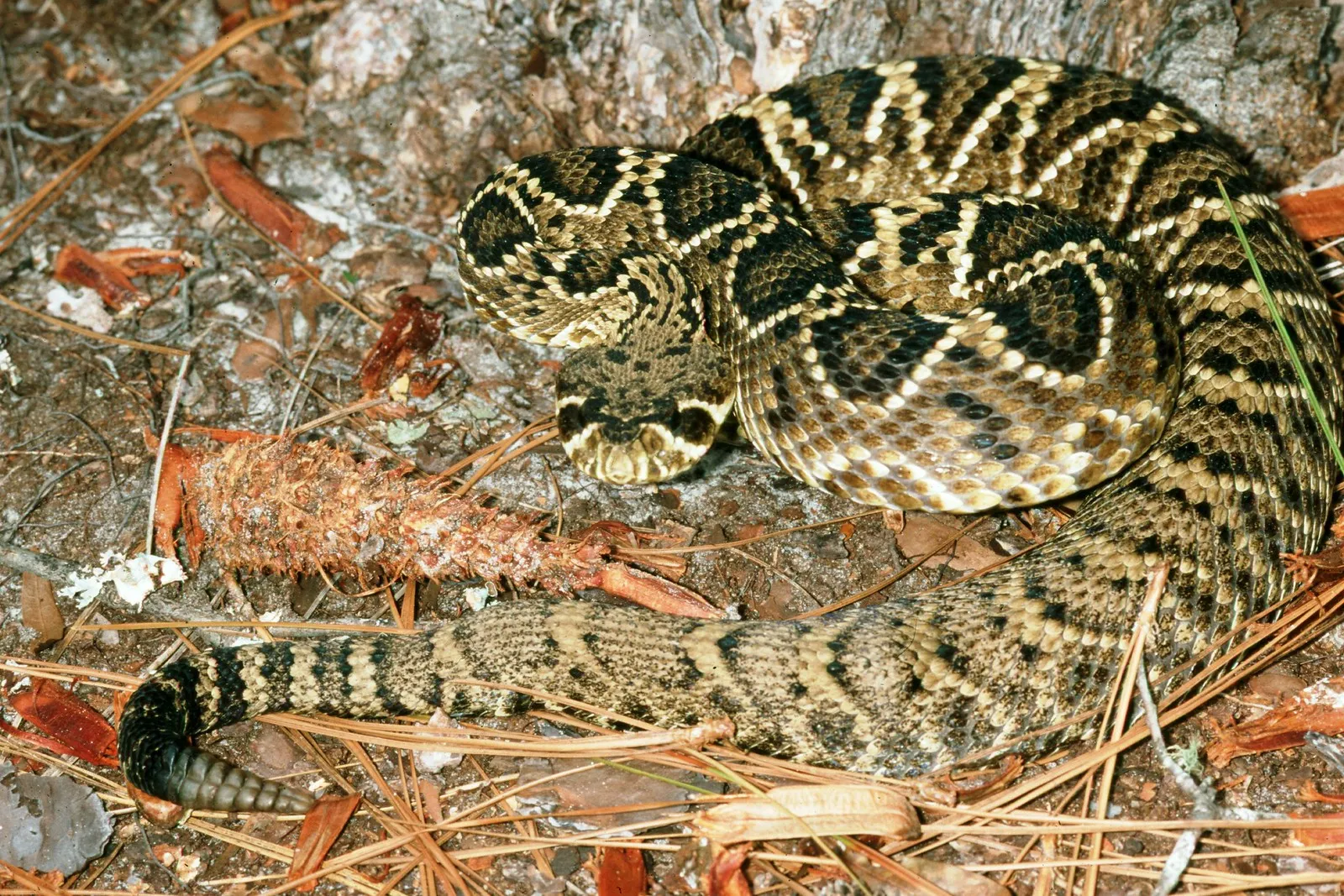
*Facts About The Eastern Diamondback Rattlesnake
- The eastern diamondback rattlesnake is the largest venomous snake in North America.
- It can grow to be 3 to 7 feet long and weigh between 4 to 15 pounds.
- The snake has diamond-shaped patterns on its back outlined in black.
- Its distinctive rattle at the end of its tail serves as a warning signal.
- Eastern diamondbacks primarily eat small mammals like rats, mice, and rabbits.
- They are nocturnal hunters, preferring to hunt at night.
- Their venomous bite is strong and used for hunting and defense.
- They inhabit various habitats such as pine forests, hardwood forests, and coastal marshes.
- Eastern diamondbacks are ovoviviparous, giving birth to live young.
- In the wild, they typically live 10 to 20 years, but in captivity, they can live longer.
- Their conservation status is vulnerable due to habitat loss and persecution.
- They are not suitable as pets due to their venomous nature and specialized care requirements.
| Criteria | Summary |
| Scientific Classification |
Provides systematic categorization for study and conservation efforts.
|
| Subspecies |
Lack of recognized subspecies simplifies conservation management but may indicate genetic vulnerability.
|
| Size and Weight |
Large size makes them significant predators, influencing prey populations and ecosystem balance.
|
| Appearance and Identification |
Distinctive features aid in accurate identification, crucial for safety and conservation efforts.
|
| Dentition and Bite Force |
Venomous bite is crucial for hunting and self-defense, influencing predator-prey interactions and ecosystem dynamics.
|
| Diet |
Predation on small mammals regulates prey populations, affecting ecosystem structure.
|
| Behavior |
Nocturnal habits reduce competition and shape their role as nocturnal hunters in the ecosystem.
|
| Sounds/Vocalization |
Rattling serves as a warning signal, influencing predator-prey interactions and social dynamics.
|
| Habitat |
Preference for various habitats impacts their distribution and interactions with other species.
|
| Geographic Range and Distribution |
Understanding their range aids in conservation planning and habitat preservation.
|
| Tracks |
Tracking movements provides insights into behavior and habitat use, aiding in conservation efforts.
|
| Reproduction |
Reproductive biology affects population dynamics and genetic diversity, influencing resilience to environmental changes.
|
| Lifespan |
Lifespan influences population demographics and ecosystem stability over time.
|
| Major Adaptations |
Specialized adaptations enhance survival and ecological roles in the ecosystem.
|
| Conservation Status |
Vulnerable status highlights the need for conservation action to protect populations and maintain ecosystem health.
|
| Domestication and Suitability as a Pet |
Recognition of unsuitability as pets helps prevent human-wildlife conflicts and promotes conservation efforts.
|
1). Scientific Classification:
Kingdom: Animalia
Phylum: Chordata
Class: Reptilia
Order: Squamata
Family: Viperidae
Genus: Crotalus
Species: C. adamanteus
2). Subspecies:
Details: There are no recognized subspecies of the eastern diamondback rattlesnake (Crotalus adamanteus).
Importance: Understanding subspecies variations helps in conservation efforts and genetic studies.
Ecological Implications: Lack of subspecies diversity may indicate potential vulnerability to environmental changes and habitat loss.
3). Size and Weight:
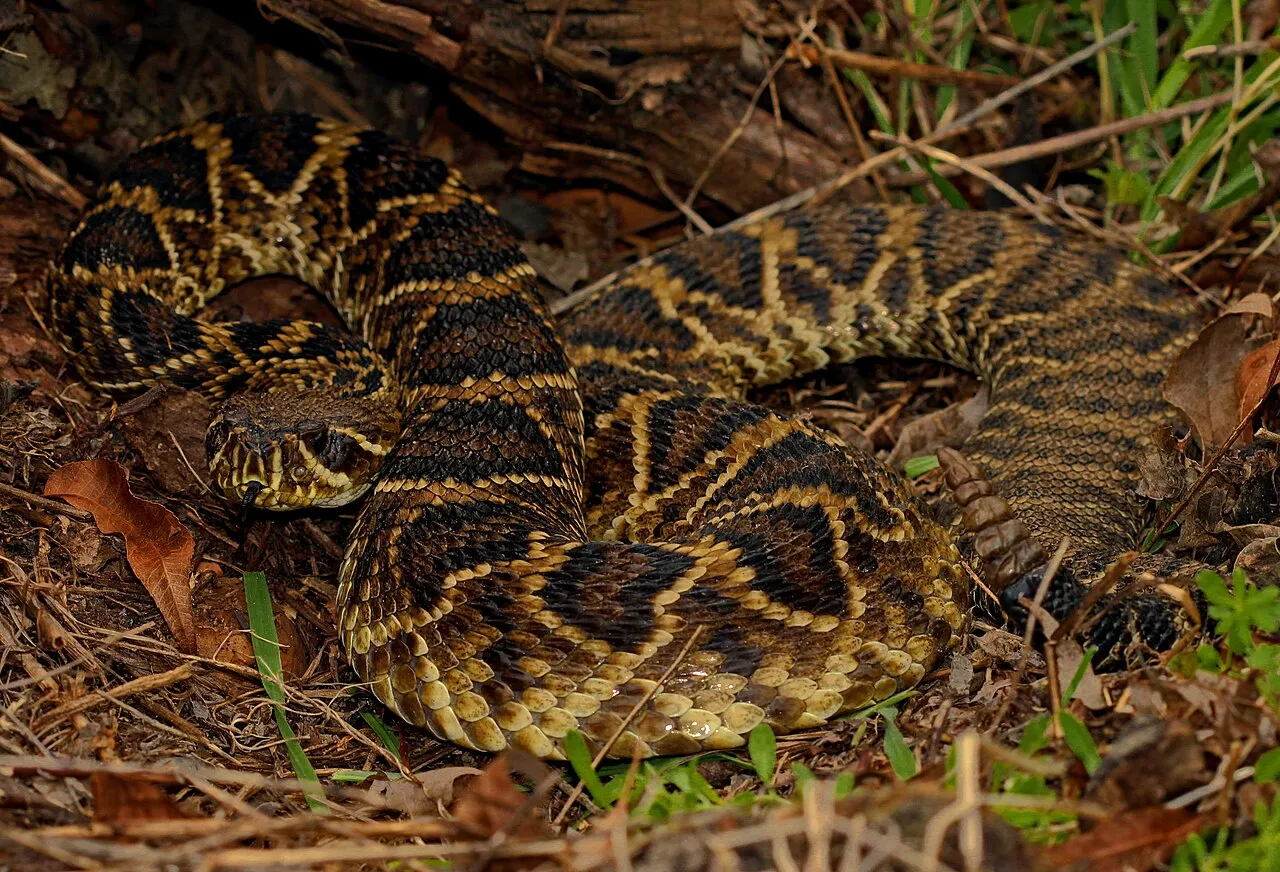
Details: Eastern diamondback rattlesnakes are the largest venomous snakes in North America, with adults typically ranging from 3 to 7 feet (0.9 to 2.1 meters) in length and weighing between 4 to 15 pounds (1.8 to 6.8 kilograms).
Importance: Their large size makes them significant predators in their ecosystems, regulating prey populations and contributing to overall ecosystem balance.
Ecological Implications: Size influences their role as apex predators, affecting prey selection and ecosystem dynamics.
4). Appearance and Identification:
Details: Eastern diamondback rattlesnakes are characterized by their diamond-shaped patterns outlined in black along their back, with a series of light-colored diamonds bordered by dark bands. They have a thick body, a large triangular head, and a distinctive rattle at the end of their tail.
Importance: Recognizing their distinct appearance aids in accurate identification, which is crucial for safety and conservation efforts.
Ecological Implications: Their cryptic coloration helps them blend into their surroundings, enhancing their hunting success and reducing predation risk.
5). Dentition and Bite Force:
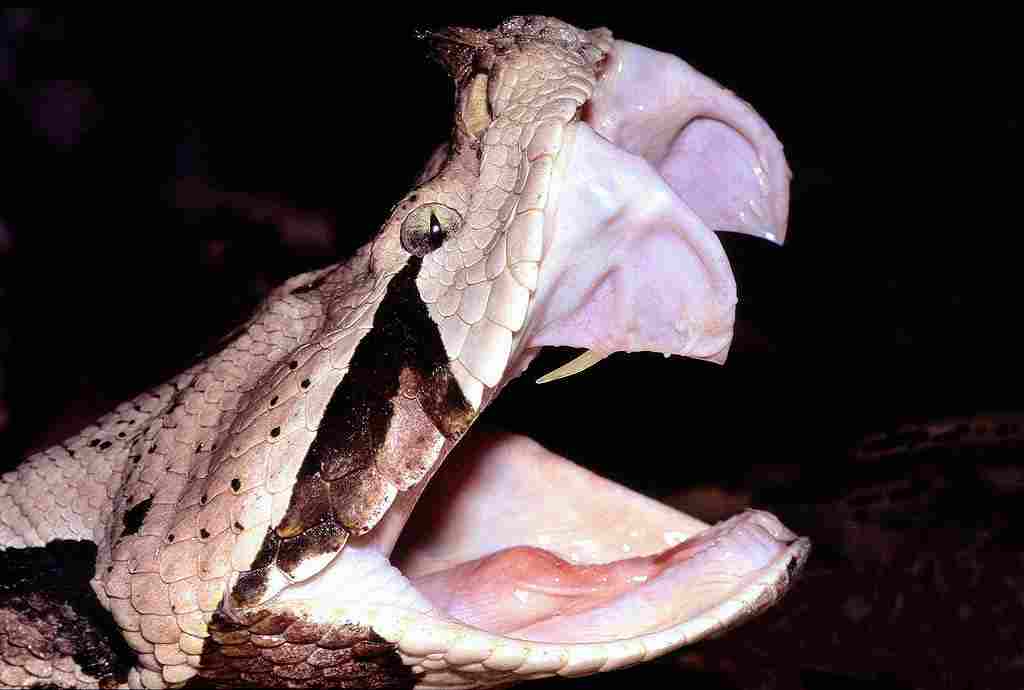
Details: Eastern diamondback rattlesnakes have long, hollow fangs connected to venom glands, which they use to inject venom into their prey or predators. Their bite force is among the strongest of all venomous snakes, capable of delivering a potent venomous bite.
Importance: Their venomous bite is a crucial adaptation for hunting and self-defense, aiding in subduing prey and deterring potential threats.
Ecological Implications: Their venomous nature influences their interactions with prey, predators, and other species in their habitat, shaping ecosystem dynamics and trophic cascades.
6). Diet:
Details: Eastern diamondback rattlesnakes primarily prey on small mammals such as rats, mice, squirrels, and rabbits. They are ambush predators, lying in wait for their prey to pass by before striking.
Importance: As apex predators, they help control the population of prey species, which in turn affects vegetation and other aspects of the ecosystem.
Ecological Implications: Their diet influences the population dynamics of prey species, which can have cascading effects on plant communities and other predator populations.
7). Behavior:
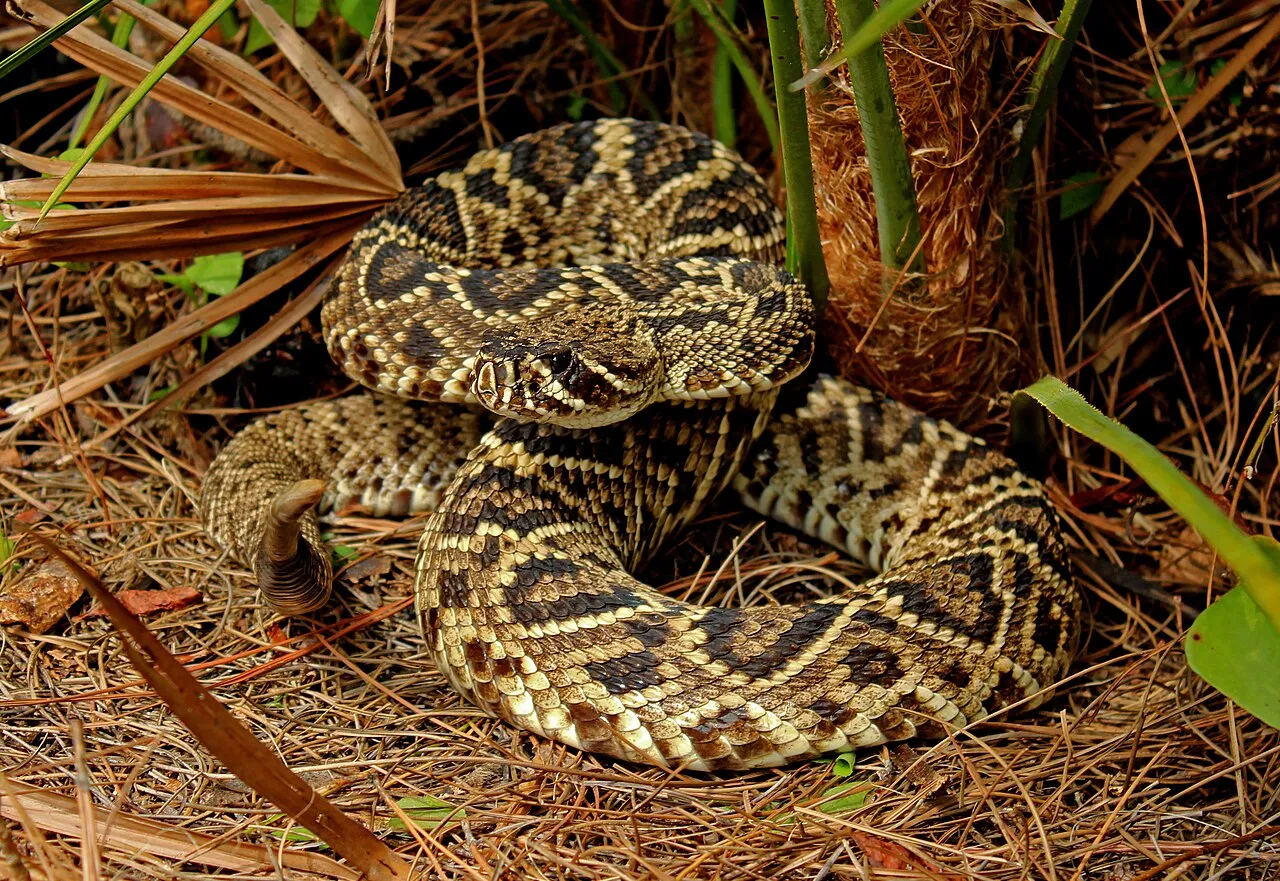
Details: Eastern diamondback rattlesnakes are solitary and primarily nocturnal hunters. During the day, they seek shelter in burrows, fallen logs, or dense vegetation to avoid extreme temperatures.
Importance: Understanding their behavior is crucial for human safety and conservation efforts.
Ecological Implications: Their nocturnal behavior reduces competition with diurnal predators and prey, shaping their role in the ecosystem as nocturnal hunters.
8). Sounds/Vocalization:
Details: Eastern diamondback rattlesnakes are famous for their distinctive rattling sound produced by vibrating segments of their rattle at the end of their tail. They use this warning signal to deter potential threats.
Importance: The rattling sound serves as a warning to humans and other animals, helping to prevent accidental encounters and bites.
Ecological Implications: Vocalization is an important form of communication that influences predator-prey interactions and social dynamics within the species, contributing to ecosystem stability.
9). Habitat:
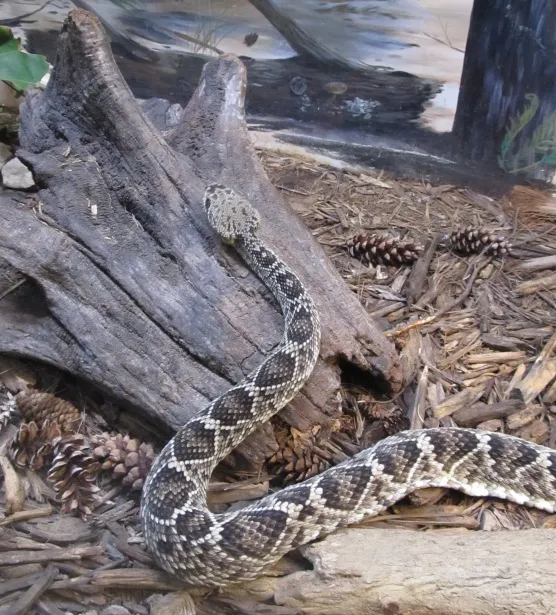
Details: Eastern diamondback rattlesnakes inhabit a variety of habitats, including pine forests, hardwood forests, scrublands, and coastal marshes, preferring areas with dense vegetation and suitable prey populations.
Importance: Understanding their habitat requirements is essential for conservation efforts and managing human-wildlife interactions.
Ecological Implications: Their habitat preferences influence their distribution, abundance, and interactions with other species, shaping the structure and function of ecosystems they inhabit.
10). Geographic Range and Distribution:
Details: The eastern diamondback rattlesnake is native to the southeastern United States, ranging from North Carolina to eastern Louisiana and south through Florida.
Importance: Understanding their distribution helps in conservation planning and management of their populations.
Ecological Implications: Their range influences their interactions with other species and their role in regional ecosystems, highlighting the importance of preserving diverse habitats within their range.
11). Tracks:
Details: Eastern diamondback rattlesnakes leave distinctive tracks with paired imprints from their body and tail, often showing a sinuous pattern as they move.
Importance: Tracking their movements aids researchers in studying their behavior and ecology.
Ecological Implications: Tracking their movements can provide insights into their habitat use, migration patterns, and interactions with other species, contributing to ecosystem monitoring and conservation efforts.
12). Reproduction:

Details: Eastern diamondback rattlesnakes are ovoviviparous, meaning females give birth to live young rather than laying eggs. Mating typically occurs in the spring, and females give birth to a litter of 5 to 25 offspring in late summer or early fall.
Importance: Understanding their reproductive biology is crucial for managing their populations and ensuring their long-term survival.
Ecological Implications: Reproduction influences population dynamics and genetic diversity within the species, affecting their resilience to environmental changes and disturbances.
13). Lifespan:
Details: Eastern diamondback rattlesnakes have a relatively long lifespan for a snake, with individuals in the wild typically living 10 to 20 years. In captivity, they can live even longer, up to 25 years or more.
Importance: Knowing their lifespan helps in understanding population dynamics and developing effective conservation strategies.
Ecological Implications: Lifespan influences population demographics and turnover rates, impacting ecosystem stability and resilience over time.
14). Major Adaptations:
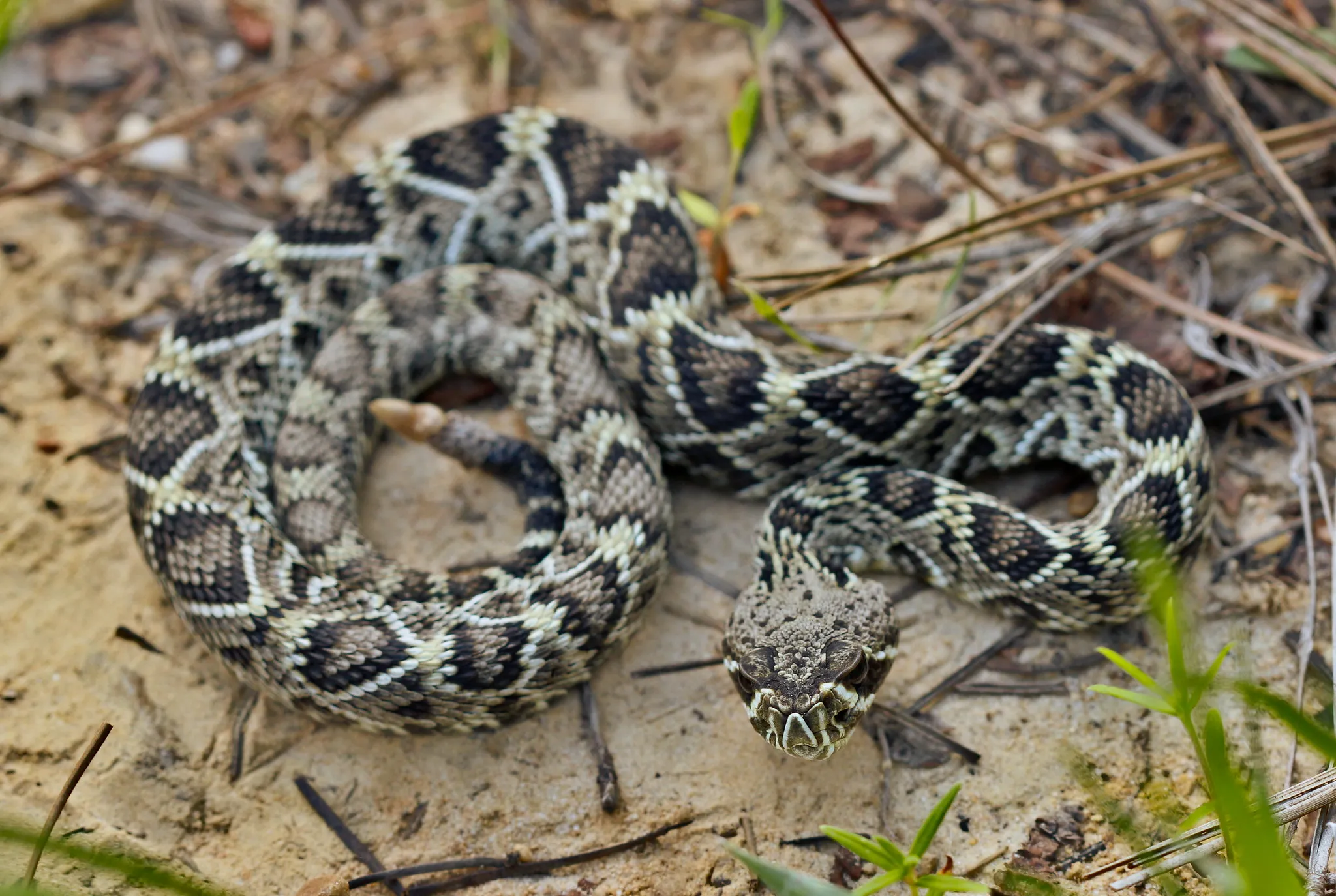
Details: Eastern diamondback rattlesnakes have several adaptations for survival, including venomous fangs for hunting and defense, cryptic coloration for camouflage, heat-sensing pits for detecting prey, and a rattle for warning potential threats.
Importance: These adaptations enhance their ability to thrive in their habitat and fulfill their ecological roles as predators.
Ecological Implications: Their adaptations influence their interactions with prey, predators, and competitors, shaping ecosystem dynamics and trophic relationships.
15). Conservation Status:
Details: The eastern diamondback rattlesnake is listed as “vulnerable” on the International Union for Conservation of Nature (IUCN) Red List due to habitat loss, fragmentation, persecution by humans, and mortality from road traffic.
Importance: Conservation efforts are crucial for protecting this species and maintaining healthy ecosystems.
Ecological Implications: Declines in eastern diamondback rattlesnake populations can disrupt food webs, alter predator-prey relationships, and affect ecosystem processes, highlighting the importance of conservation action.
16). Domestication and Suitability as a Pet:
Details: Eastern diamondback rattlesnakes are not suitable as pets due to their venomous nature, large size, and specialized care requirements. Keeping them as pets is also illegal in many areas due to safety concerns.
Importance: Recognizing their unsuitability as pets helps prevent human-wildlife conflicts and protects both people and the snakes.
Ecological Implications: Encouraging responsible pet ownership and discouraging the illegal pet trade helps reduce pressures on wild populations and promotes conservation efforts for the species.
*Summary of Information On Eastern Diamondback Rattlesnake
Scientific Classification:
Provides systematic categorization for study and conservation efforts.
Subspecies:
Lack of recognized subspecies simplifies conservation management but may indicate genetic vulnerability.
Size and Weight:
Large size makes them significant predators, influencing prey populations and ecosystem balance.
Appearance and Identification:
Distinctive features aid in accurate identification, crucial for safety and conservation efforts.
Dentition and Bite Force:
Venomous bite is crucial for hunting and self-defense, influencing predator-prey interactions and ecosystem dynamics.
Diet:
Predation on small mammals regulates prey populations, affecting ecosystem structure.
Behavior:
Nocturnal habits reduce competition and shape their role as nocturnal hunters in the ecosystem.
Sounds/Vocalization:
Rattling serves as a warning signal, influencing predator-prey interactions and social dynamics.
Habitat:
Preference for various habitats impacts their distribution and interactions with other species.
Geographic Range and Distribution:
Understanding their range aids in conservation planning and habitat preservation.
Tracks:
Tracking movements provides insights into behavior and habitat use, aiding in conservation efforts.
Reproduction:
Reproductive biology affects population dynamics and genetic diversity, influencing resilience to environmental changes.
Lifespan:
Lifespan influences population demographics and ecosystem stability over time.
Major Adaptations:
Specialized adaptations enhance survival and ecological roles in the ecosystem.
Conservation Status:
Vulnerable status highlights the need for conservation action to protect populations and maintain ecosystem health.
Domestication and Suitability as a Pet:
Recognition of unsuitability as pets helps prevent human-wildlife conflicts and promotes conservation efforts.
